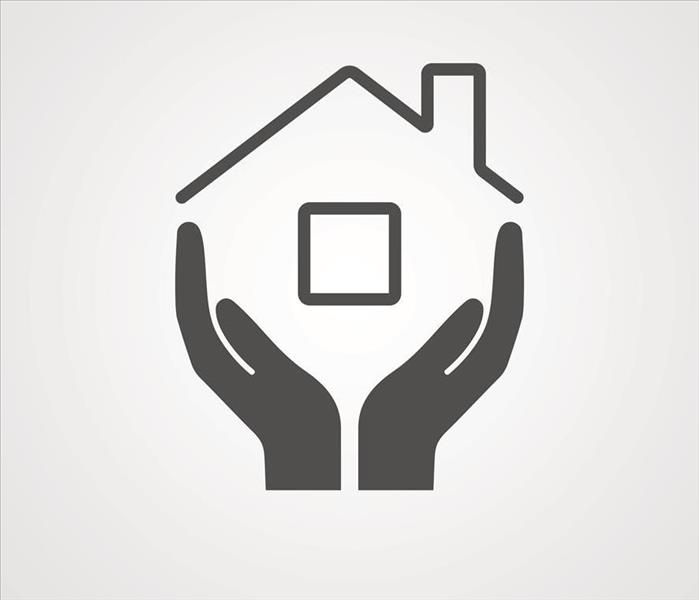Do I Need Professional Help to Restore My Home and Contents After a Fire?
4/11/2020 (Permalink)
 Your home is in good hands with SERVPRO. We are always available to help, call us today at (727) 586-0060.
Your home is in good hands with SERVPRO. We are always available to help, call us today at (727) 586-0060.
Avoid Exposure to Toxins and Return Your Largo Home to Safety and Comfort When SERVPRO Is on the Job
You might have heard that recovery from a household fire is not a task a homeowner should take on without expert assistance. Even if you are confident that you possess better than average DIY skills, cleaning up fire residues requires a highly-specialized set of skills backed up by professional training, tools, and products, and the use of personal protective gear. Failure to have the background and take precautions can put you and your family in harm's way.
Why Are Fire Residues More Hazardous Than Ordinary Dirt and Grime?
When a fire moves through your Largo home, it uses building materials and contents as fuel. The incompletely consumed bits of the structure and personal possessions and furnishings comprise the fire damage residues Largo residents must clear away. Heat and combustion causes chemical changes in the substances burned and heated, which in many homes include:
- Foams
- Plastics
- Rubber
- Plaster
- Wood and wood products
- Metals
- Paper
- Organic and synthetic fibers
- Foods and grease
What Kinds of Byproducts Can Household Fires Produce?
Some of the residues created by a fire remain airborne, exposing occupants to respiratory risks. Other particles coat surfaces, corroding, discoloring, and infusing porous materials with malodors. Cleaning of the soot can result in skin contact and reintroduction of the disturbed particles into the air. The byproducts of a household fire depend on the dwelling's construction date, the makeup of the contents, and many other factors. Hazardous substances can include:
Tars Ammonia Sulfur dioxide
Nitrogen oxides Aldehydes Acid gases
Benzene Toluene Styrene
Metals Dioxins Asbestos
Lead Formaldehyde Carbon monoxide
Carbon dioxide Polycyclic aromatic hydrocarbons (PAHs)
How Do Professionals Protect Occupants and Workers During Fire Cleanup?
Containment and the use of PPE are essential when SERVPRO crews plan for professional smoke, soot, and odor abatement. We frequently choose to wrap the damaged spaces in 1.6 mil polyethylene and employ a negative pressure air scrubbing system to prevent the drift of fire residues into unaffected spaces in your home. The atmosphere inside the partition is forced through HEPA filters, removing nearly all contaminants before exhausting to the outside. The suction created seals the contained space from the rest of the house.
What Kinds of Personal Protective Equipment (PPE) Are Essential for Fire Damage Restoration Workers?
When our crews take on cleanup operations, they suit up in appropriate clothing and other equipment to make sure they can complete the tasks safely. The following items and others added if necessary not only guard against skin contact with toxic substances or inhaling contaminants by the technicians, but they also ensure our employees do not track these hazardous residues into unaffected spaces in your home.
- Hard hats
- Eye protection
- Hand protection
- Protective clothing
- Boots or safety shoes
- Respirators that either filter air or supply an alternative "atmosphere" (from air tanks or compressors) according to recommendations of the National Institute for Occupational Safety and Health (NIOSH)
Do You Need Special Cleaners and Tools to Remove Soot?
The substances coating the surfaces of your home after a fire are not only potentially hazardous, they also are often tightly adhered and challenging to remove. SERVPRO managers and technicians complete rigorous coursework through the Institute of Inspection, Cleaning, and Restoration Certification (IICRC). We learn how to match the soils deposited by the fire with safe and effective products and tools that can loosen and clean them from walls, ceilings, floors, furnishings, and other items.
How Do Professionals Clean Off Different Residues?
Soot, generally speaking, presents in one of three primary ways. We approach each type with a plan based on research and best practices taught by the IICRC.
Dry Soot
What causes dry soot?
Usually, dry soot deposits when wood and paper burns fast and hot. The residues are loose and ashy. Cleaning methods are primarily mechanical, and include:
- Vacuuming
- Brushing
- Dry (chemical) sponging
- Dusting with feather dusters and cloths
Wet Soot
What causes wet soot?
Rubber and plastics create a thick, dark, and sticky residue when they heat and burn. Damp fabrics and low-oxygen fires smolder and deposit wet soot on surfaces. Cleaning methods use heat, chemical reactions, agitation, and dwell time to enhance the dissolving or emulsifying of soils, breaking the bonds between the surface and the soot:
- Spray and wipe with soaps and detergents plus water, or solvents for oily residues
- Agitation with cloths, towels, sponges and "elbow grease"
- Abrasive tools and abrasive substances added to cleaners
- Immersion cleaning, including ultrasonic machines that use sound waves to dislodge residues
Protein Soot
What is protein soot?
Kitchen fires result in a unique, very malodorous coating from the food, grease, and oils that fueled the blaze. The resulting "mist" of dehydrated proteins is nearly colorless, but clings like lacquer to anything it touches, even far from the point of origin. Dispatching of protein residues requires:
- Solvents
- Abrasive tools or additives
- Extended dwell times
- Use of immersion or ultrasonic devices and strategies if possible
SERVPRO of Largo is ready 24/7 to discuss your fire damage mitigation and remediation options. Our general contractor license also permits us to offer repair and rebuilding services. Call us at (727) 586-0060 to schedule an assessment.
Contractor Licenses:
General: CBC1250662
Learn more about Largo.






 24/7 Emergency Service
24/7 Emergency Service